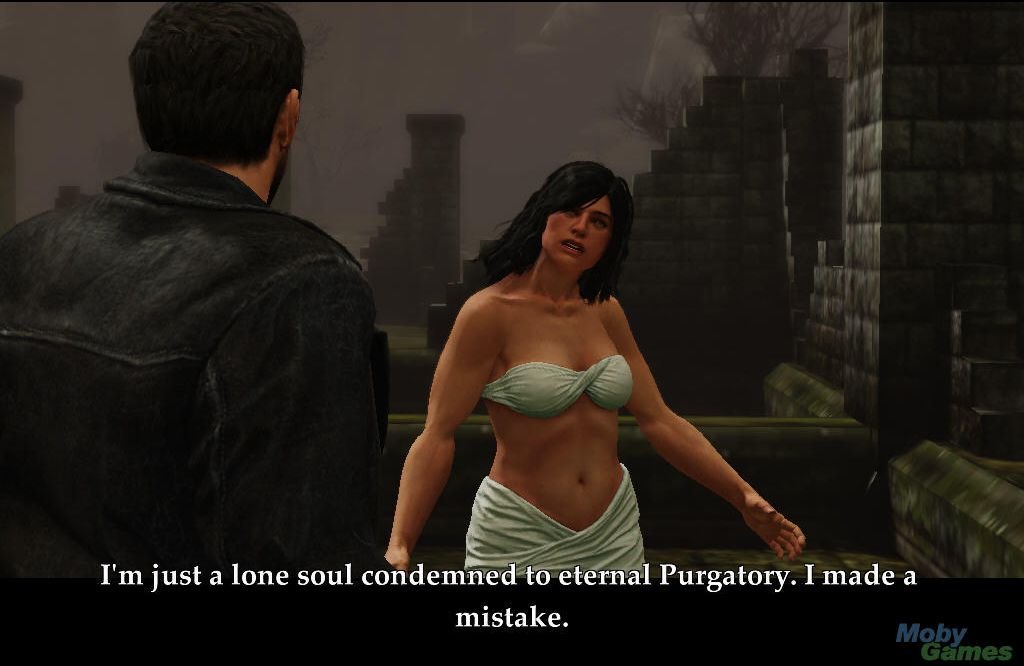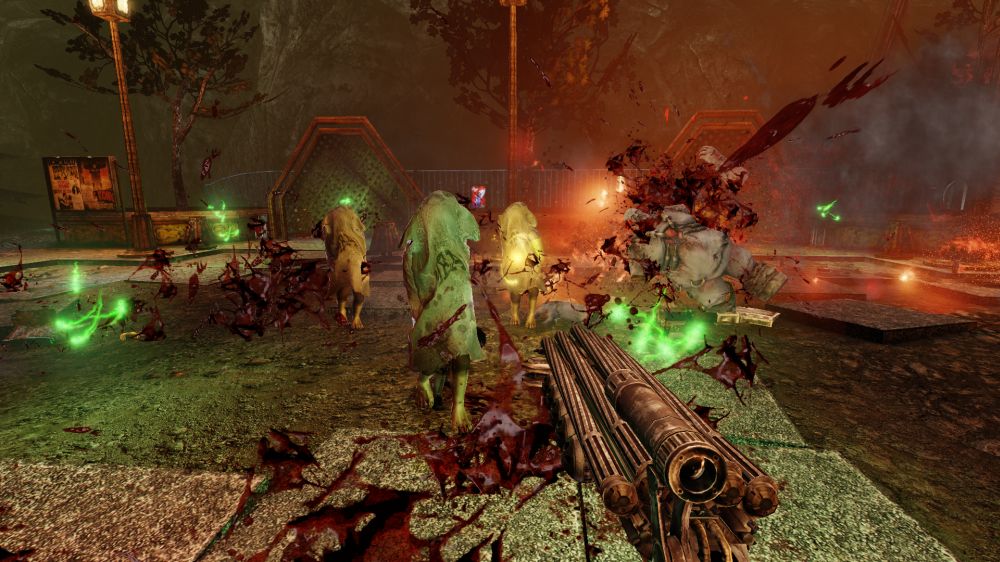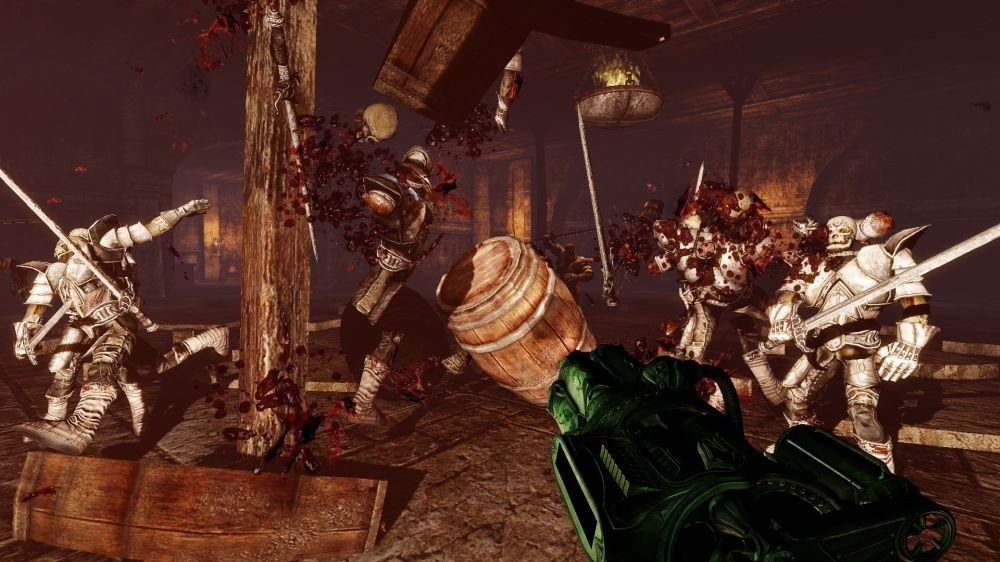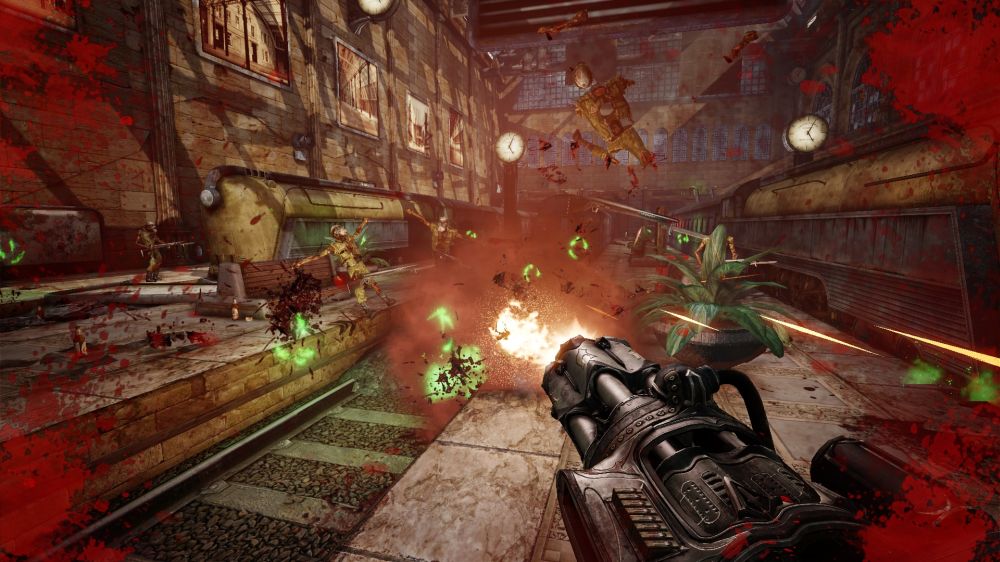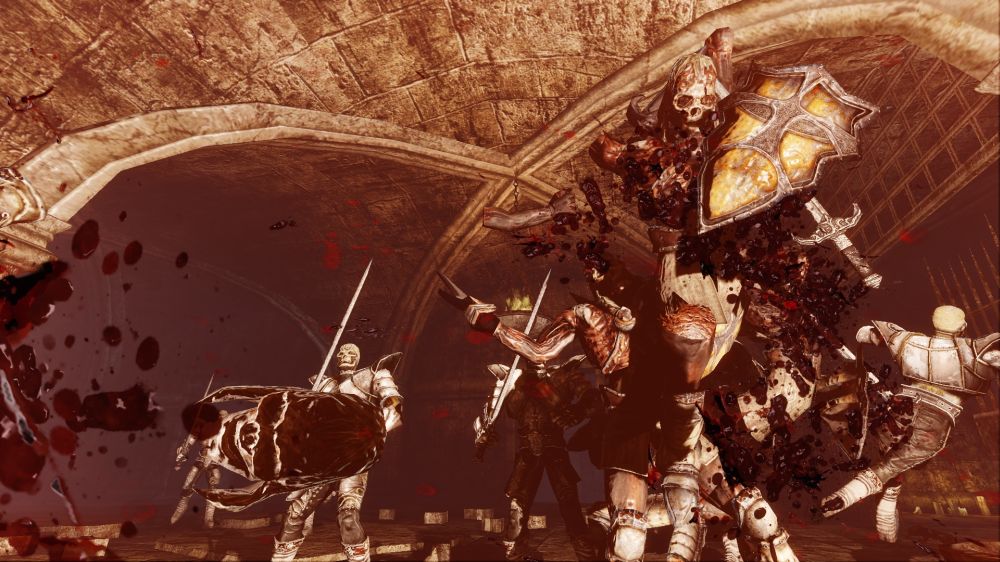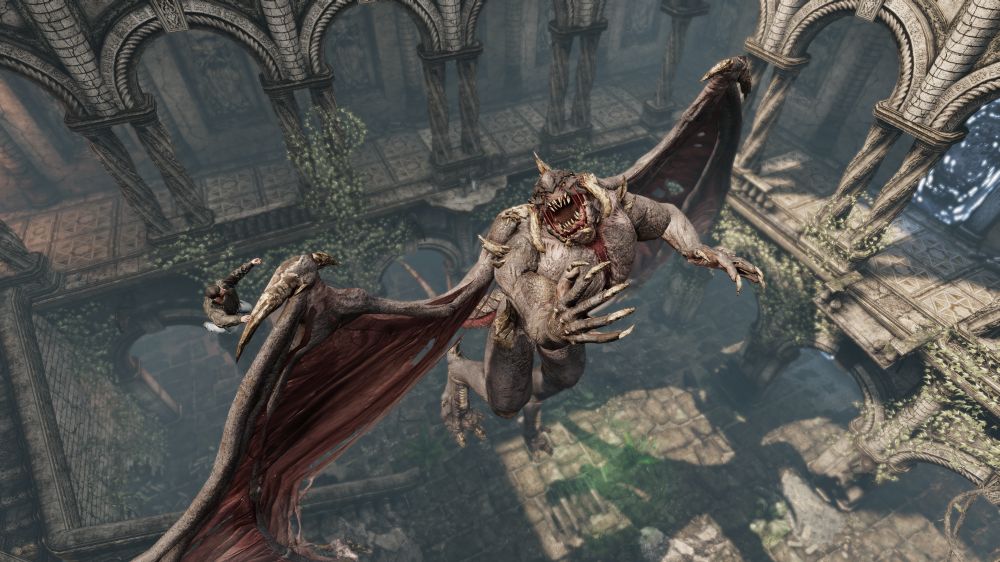Painkiller Hell and Damnation Xbox 360 Review: First-person demon hunting

Console First-Person Shooter fans could be forgiven for having missed out on the Painkiller series thus far. The series’ last console appearance was Painkiller: Hell Wars for the original Xbox back in 2006. Otherwise the series primarily appears on PC.
Though the delivery method is somewhat unconventional, Xbox fans can finally play the latest Painkiller game. Nordic Games published the Xbox 360 version of Painkiller: Hell and Damnation at retail in Europe earlier this summer. In North America, the game recently popped up as a downloadable Games on Demand title for Xbox 360. The digital release does allow for a relatively low price of $29.99, and a downloadable version is certainly better than none at all.
We’ve played through Painkiller: Hell and Damnation and its downloadable expansions in order to bring you this detailed review.
Painkiller reloaded
Hell and Damnation is a pretty good place to jump in to the series. All of the levels are high-definition remakes of levels from past games. Maybe they’re old news to series veterans, but I bet many of us don’t fall into that category. The story itself is new and takes places after past games, making Hell and Damnation both a remake and sequel. You don’t see that every day.
Said story unfolds between the game’s four chapters - and I mean only between the chapters, not individual levels. It's sparse and confusing, and the cinematic character models show a terrible grasp of human anatomy. But you play this game for its old school sensibilities, not a gripping narrative.
Killing the pain
Painkiller’s closest gameplay equivalent would be the Serious Sam games. Like Serious Sam, the focus here is on killing hordes of brain-dead monsters rather than tactical gameplay. These beasties teleport into an area out of the blue, and the player must kill them all before moving on.
The way Hell and Damnation handles checkpoints and level progression is different from other titles I’ve played. Once monsters start appearing in an area, the paths into and out of the area generally gets walled off so that you’re confined to a small portion of the level.
All the latest news, reviews, and guides for Windows and Xbox diehards.
Defeat the bad guys to make a red pentagram appear on the floor. Touching it counts as a checkpoint and opens a new path. I’m not crazy about the artificial nature of the paths opening and closing, but it does give things a very old-school feel.
The health and ammo mechanics also resemble the FPS games of yore. The protagonist’s health doesn’t regenerate by default, so you’ll often need to scour the environment for health packs in order to stay alive.
Enemies don’t drop weapons or ammunition; you’ll have to search those out too. I often ran out of ammo and had to switch to different weapons in order to keep fighting (even on the easiest difficulty). That was probably the developer’s intention, but it still feels stingy.
Guns, guns, and more guns
Painkiller’s selection of guns is far less anemic. You won’t find FPS mainstays like a sniper rifle and scoped aiming – sorry, sniper fans. Instead, the game offers a selection of unique and fairly creative guns. The stake gun nails enemies to walls. Another fires saw blades that take off opponents’ limbs.
As if that wasn’t enough, each weapon has a secondary firing function that works much differently than the primary fire. The shotgun’s secondary fire freezes enemies cold, enabling you to shatter them with a follow-up shot. One gun’s secondary shot sucks the life out of enemies, giving it to the player. Another can force enemies to fight on the player’s side – after sucking up enough souls first.
You can even hotkey any gun’s primary or secondary fire to the Y and B buttons to make mixing and matching shots easier. The only thing I don’t like is each gun’s secondary fire requires its own separate ammo. It would be far more intuitive if either shot used the same type of ammunition.
Soul stealer
Each enemy that dies leaves a glowing green soul behind. Pick up enough of them and your character Daniel goes into demon form for a short time. During this time, the world turns gray and enemies glow bright red. Every shot you fire will kill non-boss enemies instantly.
Demon mode makes the environment harder to navigate and you can’t really work on the weapon-specific Achievements while it’s active. For me, it became more of a nuisance than a blessing. Increased damage without the visual effects and different style of shots would’ve been more welcome.
You do need the souls for a few Achievements and secondary level goals, even if you don’t care about demon mode. But it takes several seconds for an enemy’s soul to show up after killing it. Waiting around for souls to appear slows the pace of the game for no good reason; they really should appear instantly.
Card collecting
Each campaign level has one or two optional objectives that players can view by pressing the Back button during gameplay. Completing these objectives sometimes gets you an Achievement, but it always unlocks a new tarot card.
Tarots cards act as gameplay modifiers. They enable affects like temporary unlimited health, increased damage, or slowing down time. Daniel can equip two active and three passive cards at a time. The active cards cost varying amounts of gold with each use.
Players earn gold primarily by destroying breakable objects, but also from enemies. Defeated monsters sometimes drop a few individual pieces of gold for you to swoop in and collect. Zig-zagging around for little scraps of gold feels inefficient, sort of like waiting for souls to appear. Couldn’t each enemy or object just drop a single stack of gold?
Multiplayer
Hell and Damnation offers both cooperative and competitive multiplayer. The entire campaign can be played in co-op either via split-screen or online. The second player controls a female character. While the game lacks any co-op specific mechanics, powering through a level with a friend is certainly more fun than going it alone. Unfortunately, most campaign Achievements can’t be earned in co-op, reducing the incentive to team up.
Online, players can team up for Survival mode (basically Horde mode that lasts for a set amount of time instead of waves) or competitive multiplayer. Either way, online is completely dead so these are practically non-features. You can meet up with a friend or two to play online, but don’t expect to find random opponents via matchmaking.
DLCs
Whereas the PC version of Hell and Damnation offers a whopping seven paid DLC expansions, the Xbox 360 version stops at three. The only essential one “The Clock Strikes Meat Night” includes three campaign stages (playable alone or co-op) and two Achievements worth a total of 100 GamerScore. It sells for $6.99, which is a good value for the gameplay on-hand.
The other two expansions only contain online multiplayer stages and an Achievement or two. They cost $3.99 each. Unless you have a friend to play them with or are an Achievement completionist, I wouldn’t bother with them.
Achievements
Every campaign level has one or two Achievements for completing a side goal, providing a nice incentive to complete them. Several weapons have their own Achievements too, the most time consuming of which will be killing 6667 enemies with the stake gun. There are also Achievements for beating the campaign on the two highest difficulties worth 100 and 200 GamerScore, respectively. Oh, and 5 online Achievements.
Hell and Damnation’s Achievements mostly do a great job at adding replay value to the game. I just hate that most of them require solo play instead of cooperative. Way to keep people from playing together, developer.
Overall Impression
Painkiller: Hell and Damnation provides a moody alternative to the lighter, more frantic Serious Sam games. The aesthetics here are strongly inspired by heavy metal album covers, and the music actually consists of some great heavy metal tunes.
Despite its obvious rough edges, Painkiller stands out by virtue of being so different from mainstream First-Person Shooters. I’m looking forward to going back for the side objectives and Achievements I missed my first time through. If you enjoy old-school FPS games, kill some time with Painkiller.
- Painkiller: Hell and Damnation – Xbox 360 (Games on Demand) – 2 GB – $29.99 – Xbox.com Store Link
- Painkiller: Hell and Damnation – UK retail version – Amazon.co.uk Product Page

Paul Acevedo was formerly a Games Editor at Windows Central. A lifelong gamer, he has written about videogames for over 15 years and reviewed over 350 games for our site. Follow him on Twitter @PaulRAcevedo. Don’t hate. Appreciate!
